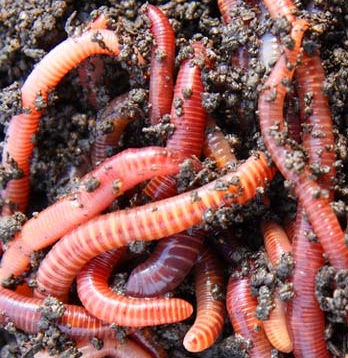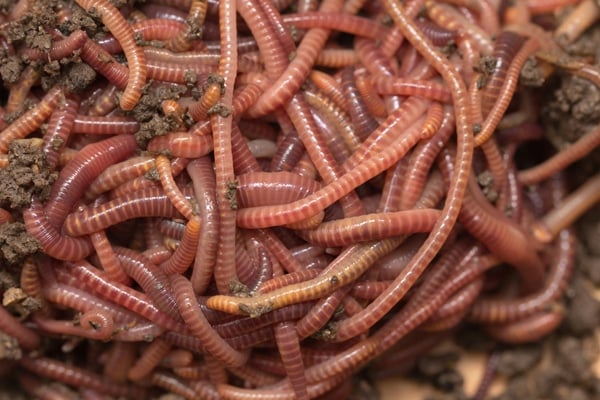Live red worms: How to raise them properly
Wiki Article
Why Red Wigglers Are the very best Choice for Your Composting Demands
Red wigglers have emerged as a superior option for composting as a result of their exceptional capacity to successfully decay natural matter while generating top quality worm spreadings. Their versatility to numerous atmospheres permits for flexible applications, making them suitable for both city and rural composting arrangements. The nutrient profile of their spreadings significantly advantages soil wellness, advertising lasting gardening techniques. Nonetheless, the trip to successful vermicomposting includes greater than simply acquiring these worms, and understanding the ideal conditions and misconceptions bordering them is essential for optimizing their capacity.Benefits of Red Wigglers

Red wigglers flourish in a variety of problems, making them versatile to different composting setups, from small containers to bigger systems. They master vermicomposting, where their activity develops a high-grade final product called worm castings, abundant in helpful bacteria and nutrients vital for plant growth. This all-natural fertilizer advertises dirt health, boosts wetness retention, and enhances plant strength against pests and conditions.
Furthermore, employing red wigglers can considerably lower methane discharges related to garbage dump waste, contributing to environmental sustainability. Their simplicity of treatment and minimal maintenance requirements make them appropriate for both novice and skilled composters. Eventually, integrating red wigglers into your composting method not just fosters efficient waste management but also raises the quality of your garden compost.
Ideal Composting Conditions
Developing ideal composting problems is vital for making the most of the performance of red wigglers in breaking down natural matter. These worms prosper in a regulated atmosphere that resembles their natural environment, which mostly contains damp, dark, and well-aerated spaces. To accomplish this, preserving a temperature range of 55 ° F to 77 ° F is vital, as extreme temperature levels can inhibit their activity and even lead to mortality.(red wiggler worms)Wetness degrees should additionally be very carefully monitored; red wigglers need a damp atmosphere, preferably around 70% wetness web content. Way too much wetness can result in anaerobic problems, while insufficient wetness can cause dehydration. Furthermore, a balanced carbon-to-nitrogen ratio, preferably around 25:1 to 30:1, supports optimum food digestion and nutrient cycling.
In addition, the composting medium need to be maintained loose and oxygenated, allowing for appropriate airflow. This not only benefits the worms however likewise help in the breakdown of organic products. By ensuring these suitable problems, composters can create a successful environment that enhances the efficiency of red wigglers, ultimately causing abundant, nutrient-dense garden compost.
Exactly How to Start Vermicomposting
Beginning vermicomposting is an uncomplicated process that can yield considerable advantages for both your garden and the setting. To start, pick an ideal container, such as a plastic bin or a wooden box, ensuring it has ventilation openings for air movement. A size of approximately 15 to 20 gallons is optimal for small operations.Following, prepare the bed linens material, which need to be a combination of shredded newspaper, cardboard, and coconut coir. This bed linens provides a comfortable habitat for the worms while keeping dampness. Go Your Domain Name for a bedding depth of about 4 to 6 inches.
Once the bedding prepares, introduce red wigglers into the bin. A populace of about 1,000 worms is enough for refining cooking area scraps properly. After including the worms, include a well balanced mix of eco-friendly products, such as vegetables and fruit scraps, together with brown materials, like dried out fallen leaves.

Nutrient-Rich Spreadings
(red wiggler compost bin)The red wigglers in your vermicomposting system play an important duty in producing nutrient-rich spreadings, a highly popular organic plant food. These castings, typically referred to as worm humus, are the result of the worms digesting organic matter and eliminating it in a form that is exceptionally advantageous for plants.Rich in vital nutrients such as nitrogen, phosphorus, and potassium, worm spreadings supply a balanced resource of fertility that boosts dirt framework and promotes healthy plant development. In addition, they include beneficial microbes that better boost soil health, aiding in nutrient absorption and condition resistance.
The slow-release nature of worm spreadings makes sure that nutrients are readily available to plants over an extended period, reducing the risk of nutrient leaching and therefore adding to sustainable horticulture practices. Unlike artificial fertilizers, which can lead to soil destruction in time, worm spreadings boost the soil's physical, chemical, and biological residential or commercial properties.
As an outcome, integrating red wigglers right into your composting initiatives not just reduces waste however likewise produces a premium natural modification that substantially profits yards, landscapes, and potted plants alike. - red wigglers
Usual False Impressions Concerning Worms
While lots of people identify the benefits of utilizing worms in composting, a number of mistaken beliefs linger about their biology and habits. One typical myth is that all worms are similarly efficient for composting, when actually, only specific types, like red wigglers, flourish in organic waste environments. These worms are especially adapted to composting, making them excellent for this objective.Another false impression is that worms are breakable and call for overly certain conditions to survive. In truth, red wigglers are quite resilient, able to endure a variety of temperatures and wetness degrees, provided they are maintained within an appropriate variety.
Furthermore, some believe that worms take in all sorts of food waste indiscriminately. Red wigglers like certain natural materials, such as fruit and vegetable scraps, and can have a hard time with meat, dairy, and oily foods, which can create odors and bring in pests.
Final Thought
In verdict, red wigglers represent an ideal option for composting as a result of their rapid decay abilities and adaptability to different environments. The nutrient-rich spreadings produced dramatically improve dirt health and wellness, promoting sustainable horticulture methods. Recognizing the optimal problems for vermicomposting and attending to usual mistaken beliefs about these worms better solidifies their function in effective waste monitoring. red wigglers. By leveraging the benefits of red wigglers, individuals and communities can contribute to a more sustainable and eco-friendly method to organic waste disposal.Report this wiki page